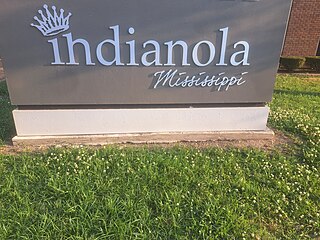
Indianola is a city in and the county seat of Sunflower County, Mississippi, United States, in the Mississippi Delta. The population was 10,683 at the 2010 census.
Phillips Academy is a co-educational university-preparatory school for boarding and day students in grades 9–12, along with a post-graduate year. The school is in Andover, Massachusetts, United States, 25 miles north of Boston. Phillips Academy has 1,149 students, and is highly selective, accepting 9% for the 2022–2023 school year. It is part of the Eight Schools Association and the Ten Schools Admissions Organization.
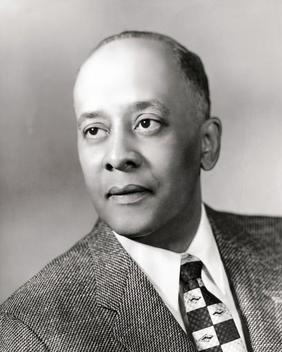
Walter Henri Dyett was an American violinist and music educator in the Chicago Public Schools system. He served as music director and assistant music director at Chicago's predominantly African-American high schools; Wendell Phillips High School and DuSable High School. Dyett served as musical director at DuSable High School from its opening in 1935 until 1962. He trained many students who became professional musicians.

Chicago Public Schools (CPS), officially classified as City of Chicago School District #299 for funding and districting reasons, in Chicago, Illinois, is the fourth-largest school district in the United States, after New York, Los Angeles, and Miami-Dade County. For the 2020–21 school year, CPS reported overseeing 638 schools, including 476 elementary schools and 162 high schools; of which 513 were district-run, 115 were charter schools, 9 were contract schools and 1 was a SAFE school. The district serves 340,658 students. Chicago Public School students attend a particular school based on their area of residence, except for charter, magnet, and selective enrollment schools.
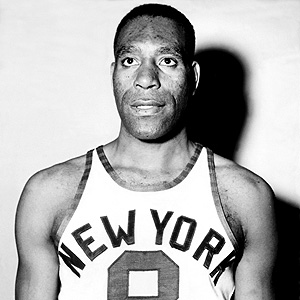
Nat "Sweetwater" Clifton was an American professional basketball and baseball player. He is best known as one of the first African Americans to play in the National Basketball Association (NBA).

McClymonds High School is a public high school in the West Oakland neighborhood of Oakland, California, United States. In addition to being the third oldest high school in Oakland, it is the only comprehensive high school in West Oakland, operated by the Oakland Unified School District. It was nicknamed the "School of Champions" in the early 1960s, after a number of award-winning athletes attended.
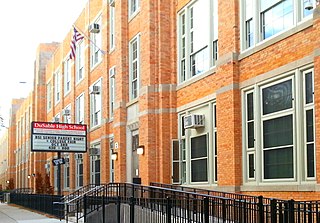
Jean Baptiste Point DuSable High School is a public high school in the Bronzeville neighborhood on the South Side of Chicago, Illinois, United States, owned by Chicago Public Schools and named after Chicago's first permanent non-native settler, Jean Baptiste Point Du Sable. Constructed between 1931 and 1934, DuSable opened in 1935.
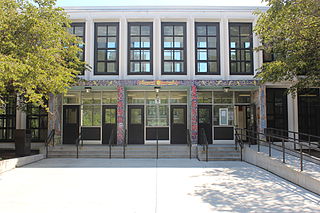
Kenwood Academy is a comprehensive public 4–year high school and magnet middle school located in the Hyde Park–Kenwood neighborhood on the south side of Chicago, Illinois, United States. Operated by the Chicago Public Schools (CPS) district, Kenwood opened in temporary quarters in 1966 and in its permanent building in 1969. Kenwood limits acceptance of high school students to those living in Hyde Park: from Lake Michigan to Cottage Grove Avenue east to west, and 47th to the Midway Plaisance north to south. Kenwood was recognized as a School of Distinction for its academic achievement and a Model School by the International Center for Leadership in Education in 2004. In addition to being a local high school, Kenwood has a magnet program that accepts students entering into 7th grade who pass a rigorous admissions test. The magnet program accepts students citywide using a random lottery with a standing of 6 or higher in both reading and math.
William Watson was one of the first African-American basketball players to lead an integrated team to a championship. In 1924 Watson's Lane Tech High School met Wendell Phillips High School to dispute the championship of the Chicago Public High School League. Watson's quintet won 18-4, and he was hailed by the black Chicago Defender newspaper as a hero, despite the newspaper's preference for the all-black Wendell Phillips club.
Argo Community High School is a public four-year high school located in Summit, Illinois, a western suburb of Chicago. The district draws students from the communities of Summit, Bedford Park, Bridgeview, Justice, Willow Springs, and a portion of Hickory Hills. The school was named for the area surrounding the large corn processing plant located near the school, which manufactured Argo corn starch and is currently owned by Ingredion. In 2014 and 2016, Argo was awarded a bronze medal by U.S. News & World Report for outstanding academic performance, the only school in the South Suburban Conference to receive such recognition.

Morgan Park High School is a 4-year public high school and middle school located in the Morgan Park neighborhood on the far south side of Chicago, Illinois, United States. Opened in 1916, Morgan Park is a part of the Chicago Public Schools district. Morgan Park is located at the intersection of 111th Street and Vincennes Avenue.
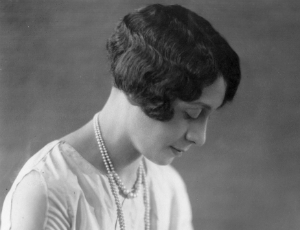
Vivian Gordon Harsh was an American librarian. Harsh is noted as the Chicago Public Library (CPL) system's first African American librarian, being assigned to the position on February 26, 1924. Harsh served as a librarian for 34 years until retiring in 1958. During her career, she began an extensive archive on African American history and culture, which is now known as, the Vivian G. Harsh Research Collection, at the CPL.

Margaret Flagg Holmes was one of the sixteen founders of Alpha Kappa Alpha Sorority, Incorporated, at Howard University in Washington, DC. It was the first sorority founded by African-American women.

Sumner High School is a St. Louis public high school that was the first high school for African-American students west of the Mississippi River in the United States. Together with Vashon High School, Sumner was one of only two public high schools in St. Louis City for African-American students and was segregated. Established in 1875 only after extensive lobbying by some of St. Louis' African-American residents, Sumner moved to its current location in 1908. It has historically also been known as Charles H. Sumner High School, and Sumner Stone High School.
Lake View High School is a public four-year high school located in the Lake View neighborhood on the north side of Chicago, Illinois, United States. Lake View is a part of the Chicago Public Schools district. While the current building opened in 1886, the school itself opened in 1874, dating to a time when the Lake View community was not a part of the city of Chicago. Lake View became a part of Chicago in 1889. Created when the Lake View area was its own township before it joined Chicago, the school is the oldest operating township secondary school in the state of Illinois.
George Ellis Johnson Sr. is an American businessman and entrepreneur. Johnson is the founder of Johnson Products Company, an international cosmetics empire headquartered in Chicago, Illinois which created products such as Ultra Sheen and Afro Sheen.

John E. Wilson, popularly known as Jumpin' Johnny Wilson, was an American basketball and baseball player. He gained his nickname for being the only player on his high school team able to dunk the basketball.
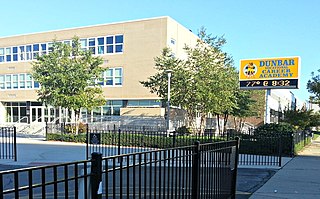
Dunbar Vocational High School is a public 4–year vocational high school located in the Bronzeville neighborhood on the south side of Chicago, Illinois, United States. Dunbar opened in 1942 and is operated by the Chicago Public Schools (CPS) district. The school is named in honor of the African–American poet, novelist, and playwright Paul Laurence Dunbar.

Walter Henri Dyett High School For The Arts is a public four–year arts high school located in the Washington Park neighborhood on the south side of Chicago, Illinois, United States. The school opened in 1972. Dyett is a part of the Chicago Public Schools system and is named for American violinist and music educator Walter Henri Dyett (1901–1969). The school became an arts high school for the 2016–17 school year.
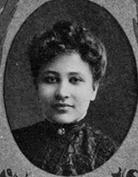
Maudelle Tanner Bousfield was an American educator. Bousfield was the first African–American woman to graduate from the University of Illinois, and the first African–American school principal within the Chicago Public Schools district.

















